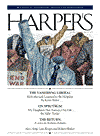 SOUNDTRACK: KISS-Sonic Boom (2009).
SOUNDTRACK: KISS-Sonic Boom (2009).
 Kiss has been kicking around in one incarnation or another for the last few years: original line up with make up, another line up with no make up and now this new line up: original makeup with two new people in the Peter and Ace positions (I wonder what happened to Bruce Kulick?).
Kiss has been kicking around in one incarnation or another for the last few years: original line up with make up, another line up with no make up and now this new line up: original makeup with two new people in the Peter and Ace positions (I wonder what happened to Bruce Kulick?).
There’s something disingenuous about having a fake Ace and a fake Peter, because in the past they always changed makeup for new members. So, this gives the impression that the original members are here (even though you can see that they are different men under the makeup).
But, Gene says it’s about the band, not the people. So, whatever. The first song, “Modern Day Delilah” is as good as any song they’ve done in two decades. It’s heavy and catchy and the band sounds great. But I feel like each song produces diminishing returns. “Russian Roulette” loses me because the lyrics are seemingly for two different songs: one in the verses, one in the chorus (not that one should ever look too deeply at Kiss lyrics).
“Never Enough” sounds like a pretty typical 90’s Kiss song (except the melody is totally Ozzy’s “Flying High Again.” “Nobody’s Perfect” is one of those poppy Gene songs that’s kind of throwaway but works well as a light-metal song.
The most egregious errors on this disc are the two anthems. If ever there was a band who thrives on anthems, it’s Kiss. But their best anthems are about partying and rocking. These anthems are about standing united together (and we’ll ask the former members of Kiss about that). “Stand” is about being there when you’re down. “All for the Glory” is a similar theme (we’re all for one), but it fares better musically. It is weird though that fake Peter sings it in voice that sounds a little bit like real Peter. It’s also weird that “When the Lightning Strikes” features fake Ace that sounds a wee bit like real Ace.
On some better notes, I rather like the silly pun of “Danger You, Danger Me, Dangerous.” And, “I’m an Animal” sounds a like Creatures of the Night era Kiss, which is a good thing. The final song is an anthem that they got right. It’s about partying and features a silly “Say Yeah!” chorus. And that’s what Kiss does best.
The bonus disc is this new lineup re-recording classic Kiss songs. It’s a weird thing and number of bands seem to be doing it lately. I’m not entirely sure why. Most of the songs sound exactly the same, but where they deviate from the original I don’t think they work as well (yes, I’m traditionalist). Although I like the less disco-ey version of “I Was Made for Lovin’ You.” But if you’re not going to radically change anything, then why bother?
And to hear the by now 60-something year-old Gene Simmons singing about a 16-year-old is just majorly creepy (before it was statutory, now it’s statutory and gross) if he keeps going, he’ll be living the lyrics of “Goin’ Blind,” “I’m 93, you’re 16.”
So, this is a good effort from the band. It has received pretty rave reviews, which I don’t think it quite deserves. But it’s better than a lot of their middle period discs.
[READ: March 20, 2010] School of Fear
I ordered this book for our library’s Spanish collection. When it arrived it looked intriguing, so I found an English copy and set out to read it. I enjoy this sort of children’s book: adventure, schooling, fears, books that don’t insult kids’ intelligence.
And this book doesn’t. I’m not even sure exactly what the age range is supposed to be because some of the jokes are quite sophisticated. However, as I will get to shortly, the older the reader is, the less likely that she will fall for the “surprise” of the book.
But let’s start at the beginning. The premise of the book is that if you have a terrifying, crippling fear, The School of Fear will cure you of it. But the school is incredibly secretive, so secretive, in fact, that no one knows about it (except for the precious few who can help you get help there). (more…)

 SOUNDTRACK: RUSH-A Farewell to Kings (1977).
SOUNDTRACK: RUSH-A Farewell to Kings (1977). Although I recently said that Caress of Steel is one of my favorite Rush albums, I’m really torn between a number of their albums from the 1970s. I’ve loved A Farewell to Kings since the time I got it: it’s over the top, and it showcases all of the band’s strengths.
Although I recently said that Caress of Steel is one of my favorite Rush albums, I’m really torn between a number of their albums from the 1970s. I’ve loved A Farewell to Kings since the time I got it: it’s over the top, and it showcases all of the band’s strengths. SOUNDTRACK: KISS-KISSology: The Ultimate Kiss Collection, Vol. 2: 1978-1991 DVD (2007).
SOUNDTRACK: KISS-KISSology: The Ultimate Kiss Collection, Vol. 2: 1978-1991 DVD (2007). In addition to containing Kiss Meets the Phantom, this DVD contains concert footage, music videos and some interviews. We see Peter Criss being interviewed on CNN (!) by a woman in a tank top (ah, the early days of 24 hour news) about leaving the band. Of course, this doesn’t hold a candle to the actual music video for “Shandi” one of the cheesiest of cheesy Kiss videos.
In addition to containing Kiss Meets the Phantom, this DVD contains concert footage, music videos and some interviews. We see Peter Criss being interviewed on CNN (!) by a woman in a tank top (ah, the early days of 24 hour news) about leaving the band. Of course, this doesn’t hold a candle to the actual music video for “Shandi” one of the cheesiest of cheesy Kiss videos. A few weeks ago on the Late Late Show, Craig Ferguson began inviting his guests to engage in an awkward pause with him. Awkward pauses have been somewhat de rigeur in popular culture for a number of years now. In fact, Ricky Gervais has pretty much built a career on them–and we have him to thank for such brilliant fare as The Office and even Modern Family.
A few weeks ago on the Late Late Show, Craig Ferguson began inviting his guests to engage in an awkward pause with him. Awkward pauses have been somewhat de rigeur in popular culture for a number of years now. In fact, Ricky Gervais has pretty much built a career on them–and we have him to thank for such brilliant fare as The Office and even Modern Family.
 SOUNDTRACK: MONSTER MAGNET-God Says No (2001).
SOUNDTRACK: MONSTER MAGNET-God Says No (2001). It’s not often I have a disc with the same name as a book. But lo, here they are. I’ve no idea if the album inspired Hannaham at all (or if he even knows of it) although the title track song does rather work well with the book, with lines like:
It’s not often I have a disc with the same name as a book. But lo, here they are. I’ve no idea if the album inspired Hannaham at all (or if he even knows of it) although the title track song does rather work well with the book, with lines like: SOUNDTRACK: BLUE ÖYSTER CULT-Curse of the Hidden Mirror (2001).
SOUNDTRACK: BLUE ÖYSTER CULT-Curse of the Hidden Mirror (2001). It’s something of a shame that BOC has fallen off the radar so much. While never a big seller, they’ve been a surprisingly good singles band. And on this disc, they have a couple of songs that could have been big hits if anybody still cared about them.
It’s something of a shame that BOC has fallen off the radar so much. While never a big seller, they’ve been a surprisingly good singles band. And on this disc, they have a couple of songs that could have been big hits if anybody still cared about them. SOUNDTRACK: BLUE ÖYSTER CULT-Heaven Forbid (1998).
SOUNDTRACK: BLUE ÖYSTER CULT-Heaven Forbid (1998).
 [WATCHED: March 17, 2010] Brief Interviews with Hideous Men
[WATCHED: March 17, 2010] Brief Interviews with Hideous Men SOUNDTRACK: RUSH-Caress of Steel (1975).
SOUNDTRACK: RUSH-Caress of Steel (1975). Despite the fact that this album is largely considered a failure, it’s one of my favorite Rush albums. There’s so much weirdness about it that I can see why it isn’t terribly popular but there’s so much goodness that it makes me a bit bummed that some glorious tracks are overlooked.
Despite the fact that this album is largely considered a failure, it’s one of my favorite Rush albums. There’s so much weirdness about it that I can see why it isn’t terribly popular but there’s so much goodness that it makes me a bit bummed that some glorious tracks are overlooked. SOUNDTRACK: BLUE ÖYSTER CULT-Imaginos (1988).
SOUNDTRACK: BLUE ÖYSTER CULT-Imaginos (1988). I think of this as the last BOC album (although they have released two since this one) because it was the last one that I was really aware of when it came out. My roommate Glen was super excited about it and we listened to it all the time. And even though I’ve said that Fire of Unknown Origin is my favorite BOC disc, I think this one may be better.
I think of this as the last BOC album (although they have released two since this one) because it was the last one that I was really aware of when it came out. My roommate Glen was super excited about it and we listened to it all the time. And even though I’ve said that Fire of Unknown Origin is my favorite BOC disc, I think this one may be better.